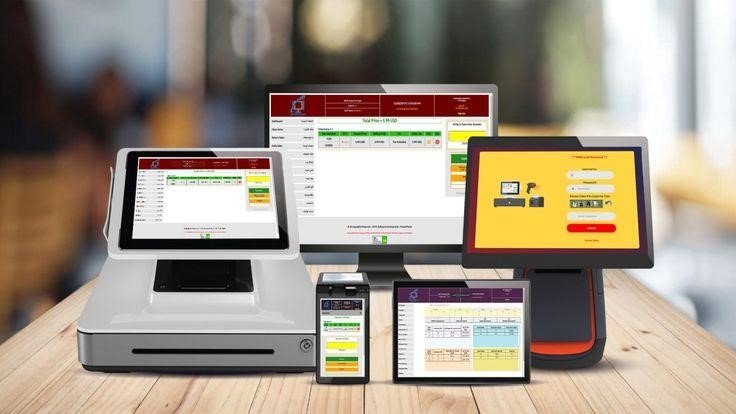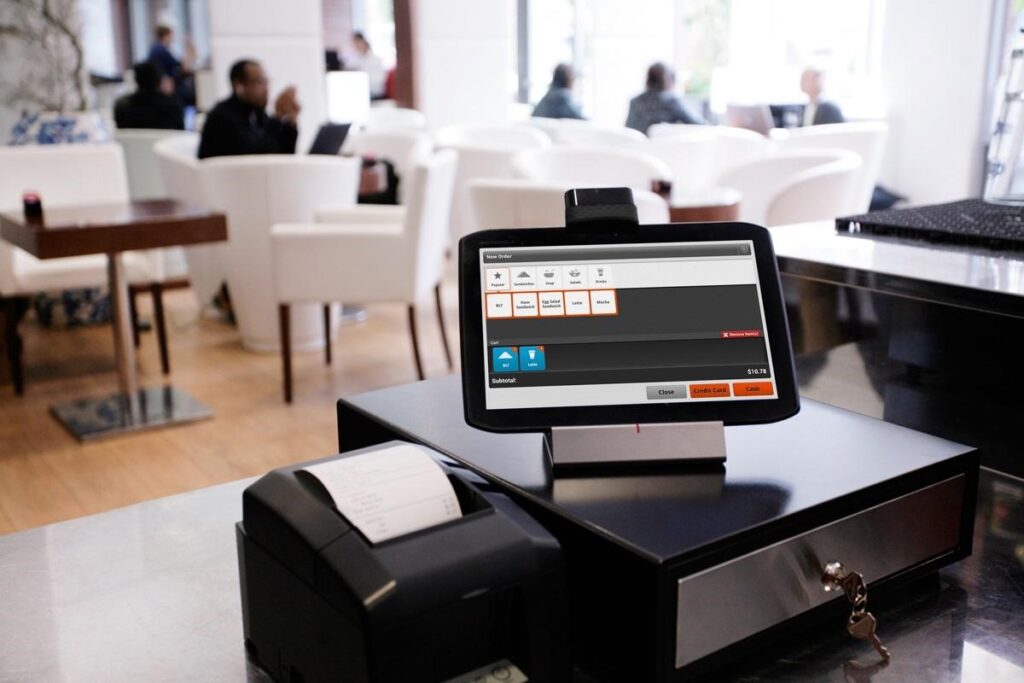Many contemporary businesses rely on enterprise resource planning (ERP) and point of sale (POS) technologies. These two words are so extensively used and misunderstood that they may occasionally be confused for one another. While POS and ERP functions vary in some ways, they can both increase organizations’ efficiency and productivity across a wide range of sectors.
Today, we will define enterprise resource planning and points of sale systems, as well as why your company should consider merging these two alternatives to optimize the advantages of each!
Overview Of Enterprise Resource Planning:
ERP, or enterprise resource planning, is “a technique used by corporations to manage and connect the critical aspects of their enterprises…
An ERP software system may also combine planning, inventory buying, sales, marketing, finance, human resources, and other functions.”
Many businesses use some ERP, whether they recognize it or not. Organizations may have numerous distinct computer systems, applications, or other software techniques that do not connect without an ERP system. ERP may be the connecting thread between various departments, products, and technology. ERP is all about helping businesses function more efficiently.
ERP systems are perfect for multichannel compatibility in enterprises. This enables consistent payment processing and tracking for purchases performed in a variety of methods, such as
• Online purchases
• Retail transactions
• Mobile transactions
• Order entry
• Recurring payments
• and much more.
Point of Sale (POS) Systems Overview:
Point of sale terminals, often known as POS machine or POS terminals, are “hardware system(s) for processing card payments at retail establishments.” The device includes software to scan magnetic strips from credit and debit cards.” POS system, in other words, are the hardware that processes payments from in-person transactions, operating as a payment gateway for companies.
POS terminals represent a technical advancement over conventional credit card devices. While current credit card machines can rapidly and securely process all types of payments, POS systems frequently offer greater adaptability, features, and horsepower. To investigate these capabilities, consider the following characteristics of a cutting-edge Clover POS terminal:
• Strong hardware:
POS terminals are powerful enough to accept credit cards, debit cards, and other electronic or cash payments. POS systems capture and save essential data from transactions for later use by enterprises.
• Aesthetically Attractive And User-Friendly Interface:
The user experience is another significant distinction between a credit card machine and a modern POS system. Clover POS systems provide one or more high-definition displays for staff and customer usage.
• Customization:
Because POS systems include native and third-party applications, the core functionality may be tailored to fit specific corporate requirements. Business owners may conduct real-time reports, have complete control over their app library, and much more.

Reasons To Integrate POS And ERP Systems:
Now that we’ve seen what makes point-of-sale terminals and enterprise resource planning software beneficial on their own, what makes integrating these two strong ideas even more helpful? There are numerous significant advantages to combining your ERP and POS systems, including:
Consistent And Combined Reporting:
POS systems are ideal for obtaining precise and thorough transactional data. ERP systems provide a perfect back end for storing, organizing, and analyzing data. Information is inexpensive and much more helpful when it is structured and evaluated.
Creating A Centralized Center For Your Company:
The days of rooms full of file cabinets and papers are (largely) in the rearview mirror, but that does not imply that worries about the business organization have gone away. Instead, software independence poses the best threat to company data. By combining POS and ERP systems, your company will have a centralized place for all of its software solutions.
Improving Business Efficiency And Forecasting:
We’ve largely spoken about broad notions, but how can these advantages affect your company’s bottom line? Integration of ERP and POS systems may significantly influence profitability by enhancing efficiency and helping firms precisely estimate revenue, inventory management, customer patterns, and so on.
There’s A Lot More:
Consider chatting with a professional merchant service provider who provides both items to see how these two vital tools may aid your company. For enterprises of all sizes, native integration may make all the difference!

The Benefits Of POS And ERP System:
An integrated ERP system with POS software will streamline operational procedures and increase sales efficiency. Businesses get improved control of operations across numerous locations by integrating real-time sales transactions and customer data with inventory, buying, accounting, and workforce management data.
Meanwhile, data centralization enables enhanced data reporting and more efficient procedures, fueling better decision-making. The synchronization of POS retail data with the ERP is critical to integrating the two systems. This guarantees that all sales transactions and customer data collected by the POS software are immediately synchronized with the backend system, including the accounts receivable module.
In a reverse way, any inventory loaded into the ERP system, together with product descriptions and price adjustments, instantly populates the POS system at all locations, including online. As a result, the company guarantees that inventory data is current across both platforms. Any data put into one system instantly updates the other.
Smooth and complete integration of ERP and POS provides several advantages to the organization.
Ensures Business Data Is Updated In Real-Time:
You can reduce unexpected human mistakes caused by manual data input with real-time updates. Employees may correctly transmit information across departments.
With each change in the POS system, sales statistics are modified or reflected correspondingly on the ERP system, or vice versa. Your personnel will have more time for additional revenue-generating duties if the manual data input is eliminated.
Optimal Management For Inventory And Distribution:
Integrating EPOS software with your ERP system would undoubtedly help your company if you work in the distribution or retail industries in Singapore. In reality, it is beneficial for organizations in the inventory and distribution industries since integrating both systems allows for total visibility of operations.
Sales, inventory, and budgeting operations are all included. With enhanced visibility of operations, management will be able to make critical choices based on data. On the other hand, backend inventory management teams can observe updated modifications when sales are made on the front end.
Backend managers will notify front-end managers when a product’s stock is low. Backend managers may access front-end sales information to better estimate demand for stock replenishment.

Improve Customer Satisfaction And Retention Rates:
Aside from keeping sales and inventory figures up to date and well-managed, combining a POS system with your ERP may considerably improve customer satisfaction rates.
This is because it enables speedier transactions, with fewer possibilities of things listed is out of stock after a customer’s purchase. You may also provide your consumers additional delivery alternatives, such as standard shipping, fast shipping, or self-collection.
To increase income, you may leverage a customer’s purchasing history to offer appropriate suggestions for future purchases. This will be an excellent chance to undertake more up-selling and cross-selling in order to increase sales. Forecasting and human resource management have been improved.
Because ERP and POS systems are integrated, the combined approach may be utilized to anticipate and improve seasonal inventory orders based on previous data. This implies that a sufficient supply of high-demand products is always accessible during critical sales. Furthermore, the opportunity to plan extra workers during peak sales is available – all from inside the same system.
Wrap Up…
Warp up, integrating ERP and POS vendors provides firms several valuable and long-term advantages. It is now assumed that every organization would use measures to acquire an edge over its competition.
However, businesses must choose a robust, modern, and adaptable ERP system that guarantees straightforward and smooth integration. Older ERP systems are often restricted in their capacity to link with third-party systems. At the same time, many modern options limit integrations to vendor-specific products.

